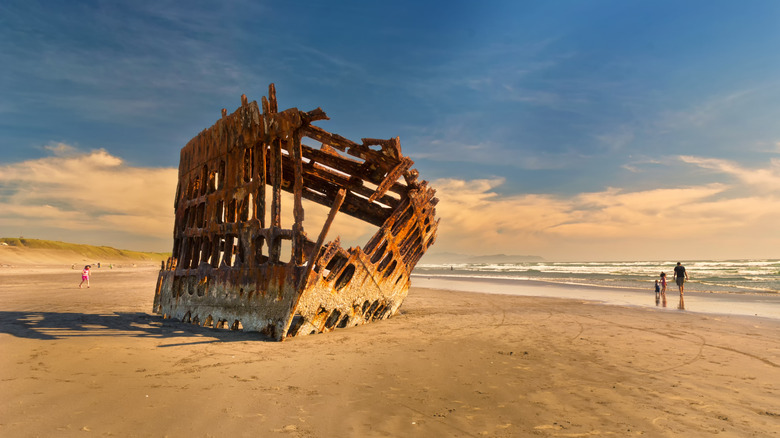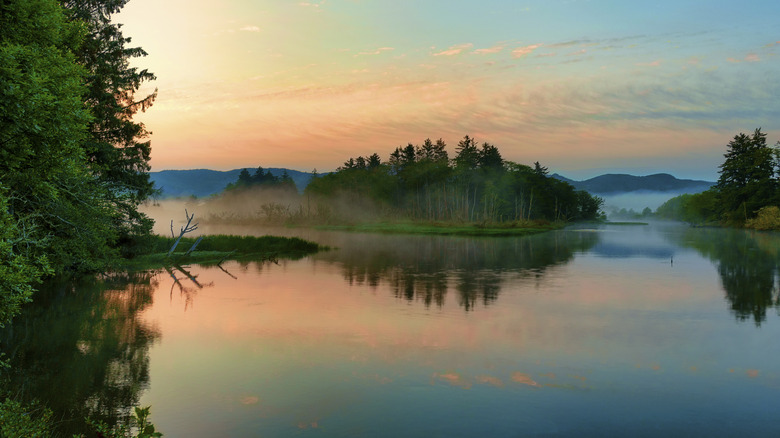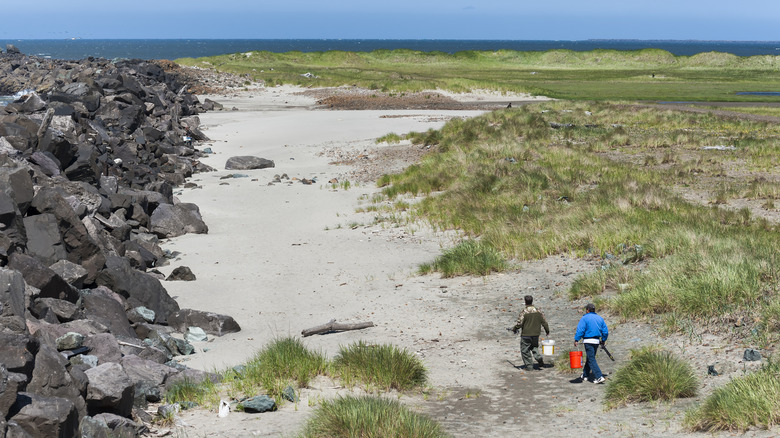One Of Oregon's Best Campsites Is A Unique Coastal State Park Stay With Sandy Shores And Historic Hikes
Thanks to more than 1,400 miles of stunning coastline, dramatic river gorges, and secluded beaches lined with lush rainforest, Oregon has no shortage of destinations with spectacular views and endless outdoor recreation. Located on a peninsula at the mouth of the picturesque Columbia River, Fort Stevens State Park is certainly among the best of these gems with 15 miles of trails, a lake perfect for waterside picnics and boating, and for the history buffs among us, a legacy as a significant U.S. military site. Take in the surf or sunset from the South Jetty observation tower or wade into the Columbia River near the wildlife viewing bunker that overlooks Trestle Bay.
Fort Stevens State Park is just across the water from a Washington state park that's one of the best destinations to explore the Pacific Northwest coast. It's also only 9 miles from downtown Astoria, Oregon's oldest city that is often called Little San Francisco. The best way to get here is via car, especially if you've got camping gear on board.
If you're flying into the region, Seattle or Portland are your best bets, with the drive from Portland International Airport only a tad over two hours and the drive from Seattle-Tacoma International Airport a doable three hours and 15 minutes. Along with 25 other Oregon State Parks, Fort Stevens upped its daily parking permit fee from $5 to $10 as of 2025. You can purchase a day pass on arrival or, if you plan to visit several state parks or return often, you can save cash with either a 12-month or 24-month pass for $30 or $50 respectively.
Stay in one of the nation's largest campgrounds
Fort Stevens State Park is a camping paradise no matter your style. Especially if you don't leave home without your RV, then this is the spot for you. The park boasts one of the most expansive public campgrounds in the whole U.S., currently comprising 174 full-hookup sites, of which 36 are pull-through, along with a whopping 302 electric sites that also have water. As of this writing, there are only six tent sites, although a rehabilitation the addition of a brand new tent loop is currently underway.
On the topic of that exciting rehabilitation project, the South Loops (loops K through O), including all sites, cabins, and yurts, are closed through the end of 2025 due to construction. But the improvements will be worth the wait as infrastructure in the campground receives a much-needed update for renewed water and electrical systems, fresh pavement, and new restrooms in that area. The South Loops are scheduled to reopen in early 2026, and the North Loops and day use areas all remain open, as of this writing.
Additional options to stay include cozying up in one of 15 yurts or 11 deluxe cabins (around half of which are pet-friendly). There are also nine hike-in primitive sites and a hiker-and-biker camp. Emphasizing how enjoyment of the outdoors should be available for everyone, 10 yurts and eight cabins are accessible for visitors with disabilities, too.
Hike through history in Fort Stevens State Park
Hiking at Fort Stevens State Park is also a unique experience, combining stunning natural scenery with history. Walk along the Delaura Dune Trail and you'll be treated to fantastic views over the Pacific Ocean complete with the dramatic beached remains of the Peter Iredale, a ship that ran aground here way back in 1906. From the Visitor Center, follow the Isaac Stevens Trail for 0.6 miles along Swash Lake and stop at the wildlife viewing blind where the path intersects with the Trestle Bay Trail. From here, you can either continue southward toward the campgrounds or head west toward the Kestrel Dune Trail, which parallels the shoreline just inland from the Delaura Dune Trail.
Part of Fort Stevens State Park's rehabilitation project also includes conservation work to improve the historic Guard House. The brick building is one of many of Fort Stevens' notable remnants from its time as a military installation used to guard where the Columbia River meets the Pacific. The original fort was used for more than 80 years, and a military museum and information center inside provides fascinating background information about the earthen fort built during the Civil War along with concrete gun batteries constructed at the turn of the 20th century.
As you can see, history abounds across the park's 4,300 acres. However, if you are looking for other activities, the park is also brimming with options for fishing, hiking, swimming, beach combing, spotting local wildlife, and more. The park even boasts ranger-guided kayak tours of Coffenbury Lake in the summertime. You can also bring your frisbees for the 23-hole Columbia Shore Disc Golf Course, which stretches nearly 7,000 feet and includes both amateur and pro tee pads.


